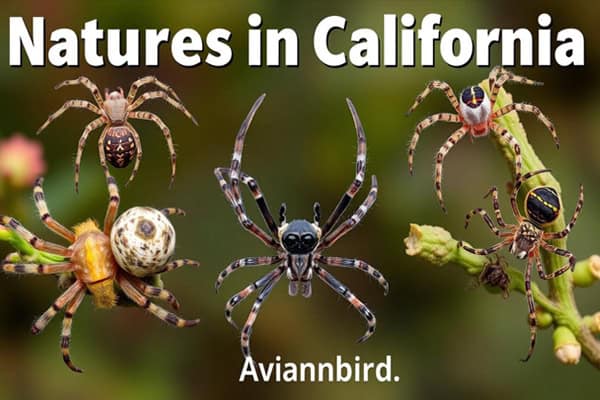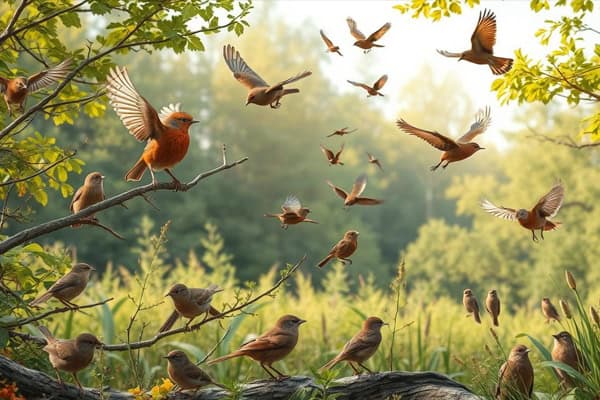5 Types of Spiders in California (ID Guide With Pictures)
Did you know California has over 50 spiders species? This shows how diverse California’s arachnids are. We’ll look at six important spiders in California. We’ll learn how to identify them.
Each spider has a special role in our ecosystem. Knowing about them helps us appreciate these spiders more.
Common Types of Spiders in California
In California, we find many common spiders. These include black widows, brown widows, and garden spiders. Learning about them helps us know more about California’s spiders.
The black widow spider is known for its shiny black body and red mark. It lives in dark places. Brown widows look similar but are lighter in color and have different patterns.
Here’s a brief overview of some common types of spiders we might encounter:
| Spider Type | Identification Features | Common Habitats |
|---|---|---|
| Black Widow | Shiny black with red hourglass | Dark corners, sheds, under rocks |
| Brown Widow | Brown color with orange markings | Undisturbed corners, gardens |
| Garden Spider | Colorful body, large orb webs | Gardens, open fields |
| Tarantula | Large hairy body | Burrows, forests |
| Wolf Spider | Brown with a robust body | Grasslands, shrubs |
1. Black Widow Spider
- Scientific Name: Latrodectus mactans
- Size: 3–10 mm (0.12–0.39 in) body length; leg span up to 3 cm (1.2 in)
- Weight: Approximately 0.5 g (0.018 oz)
- Lifespan: 1–3 years
- Diet: Insects and other small arthropods
Knowing about the black widow spider, or Latrodectus herperus, is key for safety. It helps us spot them in our surroundings. By understanding their look and actions, we can better identify them.
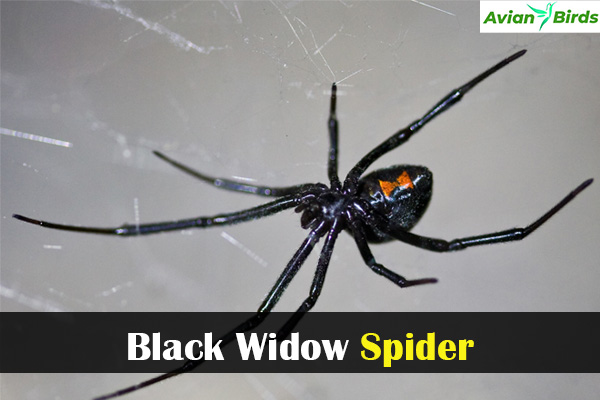
Physical Appearance
The black widow spider is easy to spot because of its unique look. It has a shiny black body and a bright red mark on its belly. Females are bigger than males, who look smaller and have a mix of colors. Here are some important facts about their look:
- Color: Glossy black with a red hourglass marking
- Size: Females range from 1.5 to 2 inches, while males are smaller
- Body Shape: Rounded abdomen with a slender neck
Habitat and Behavior
Black widow spiders like to hide in dark places. They live in wood piles, basements, and sheds. Their actions show where they like to be:
- Web Construction: They spin messy webs to catch food.
- Activity Level: They are mostly active at night.
- Feeding: They help control pests by eating them.
2. Brown Widow Spider
- Scientific Name: Latrodectus geometricus
- Size: 6–10 mm (0.24–0.39 in) body length; leg span up to 4 cm (1.6 in)
- Weight: Approximately 0.5 g (0.018 oz)
- Lifespan: 1–3 years
- Diet: Insects and other small arthropods
The brown widow spider is known as Latrodectus geometricus. It looks a bit like the black widow spider. Knowing how to spot it is key to handling it safely.
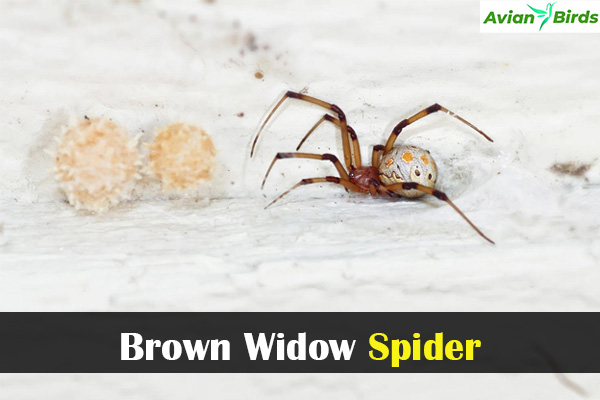
Distinguishing Features
Here are the main ways to tell the brown widow spider apart:
- It can be tan to dark brown, which is less scary than the black widow.
- It has a unique orange or yellow hourglass on its belly.
- Its abdomen has detailed patterns that make it stand out.
- These spiders like living in cities, hiding in messy spots.
- They make spiky egg sacs, unlike the smooth ones of black widows.
Knowing these differences is important for living safely with wildlife. Spotting a brown widow helps us act wisely when we see one.
3. Tarantula
- Scientific Name: Various species (e.g., Grammostola rosea)
- Size: 8–30 cm (3–12 in) leg span
- Weight: 30–200 g (1.1–7.1 oz)
- Lifespan: 10–30 years (females live longer)
- Diet: Insects, small mammals, and other invertebrates
Tarantulas Spiders in California are part of the Aphonopelma genus. They have a strong build that makes them interesting to watch. These tarantulas like to live in gardens, often in burrows or pool filters.
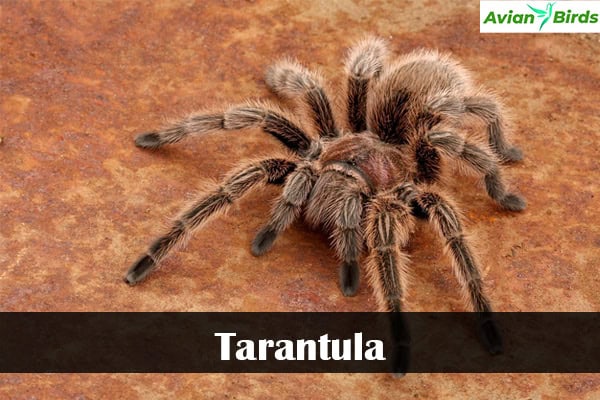
They are big and hairy, which can make them look like other spiders. But they are truly unique.
In the fall, male tarantulas go on big adventures to find mates. Even though they look scary, they are not dangerous to people. They help keep our ecosystems healthy by eating pests.
California tarantulas, especially those in the Aphonopelma genus, are both beautiful and important. Learning about them helps us see how they keep our world balanced.
4. Garden Spider
- Scientific Name: Araneus diadematus
- Size: 5–25 mm (0.2–1 in) body length; leg span varies
- Weight: Approximately 0.5 g (0.018 oz)
- Lifespan: 1 year
- Diet: Insects, primarily flies and moths
The garden spider is common in California gardens and yards. It’s part of the Araneidae family. These spiders stand out with their bright yellow and black colors.

They build large, vertical webs that look beautiful and catch insects. This helps them get food. Garden spiders are skilled at making webs.
They often sit in plants or hang in the air, waiting for prey. Knowing about their habits helps us see how important they are for controlling pests.
Garden spiders help keep pests away by eating them. Seeing a garden spider can make us appreciate nature more. Also, It shows us how everything in nature works together.
Next time you see a garden spider, look at its web and think about its important role in our world.
5. Wolf Spiders
- Scientific Name: Lycosidae family (various species)
- Size: 10–30 mm (0.39–1.18 in) body length; leg span varies
- Weight: Approximately 1–30 g (0.035–1.06 oz)
- Lifespan: 1–3 years
- Diet: Insects, small invertebrates, and other spiders
Learning about wolf spiders is important for anyone who wants to know about spider identification. These spiders belong to the genus Pardosa and are known for their unique looks and actions. Unlike many spiders, wolf spiders hunt at night and have special eyes.
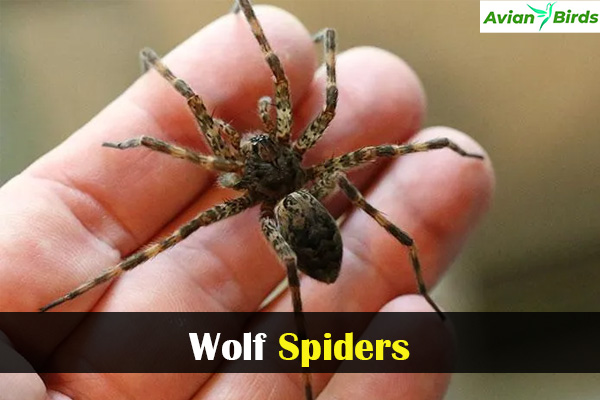
Life Cycle and Behavior
Wolf spider behavior shows how adaptable they are. Female wolf spiders carry their eggs on their backs until they hatch. This shows their strong care for their young.
After the eggs hatch, the baby spiders stay safe on their mother’s back. The life of a wolf spider includes many changes as they grow. They learn to hunt and control insect numbers as they get older.
Wolf spiders can also move to new places by ballooning. This helps them spread out and adapt to different environments.
By studying wolf spiders, we learn about their interesting life and behaviors. We see how they care for their young and hunt for food. Understanding their world helps us see their importance in nature.
Spiders in California: Tips for Identification
Identifying spiders in California can be tough because there are so many kinds. By focusing on certain spider features, we can get better at recognizing them. Look for things like color patterns, body shape, and how they build their webs. Studying these can really help us.
Using a magnifying glass lets us see tiny details we might miss. Taking clear photos also helps us study spiders better. It makes it easier to compare them with pictures in books or online. Knowing how spiders behave and where they live also helps us identify them.
- Observe the spider’s body size and shape.
- Note the color and patterns on the abdomen and legs.
- Examine the web type; many spiders are known for specific web structures.
- Watch for unique behavioral traits, such as how they move or hunt.
- Consider the spider’s environment, as different species thrive in various habitats.
| Spider Feature | Importance in Identification |
|---|---|
| Body Size and Shape | Helps differentiate between species and identify potential threats. |
| Color and Patterns | Distinct markings assist in recognizing specific spider species. |
| Web Type | Indicates the species and its hunting behavior. |
| Behavioral Traits | Provides clues about the spider’s lifestyle and interaction with its environment. |
| Habitat | Certain spiders prefer specific environments, aiding in identification. |
Importance of Spiders in the Ecosystem
Spiders are key to our ecosystem’s health and help with farming. They fight pests, making them important for pest control. They also help by adding to the variety of life in different places.
Role in Pest Control
Pest control spiders are our allies against pests. They eat insects, keeping nature in balance and cutting down on chemical use. This helps farmers and gardeners by increasing crop yields and garden health.
Without spiders, pest problems could get much worse, affecting farming big time.
Impact on Biodiversity
Spiders help make ecosystems more diverse. They live in different places, helping to keep food chains strong and making environments more stable. Their actions help other species to survive and grow.
This shows how important spiders are, beyond just being seen as scary.
Check Our Previous Articles:
| White Birds with Long Beaks in Florida |
| Small Birds with Long Tails |
| Blue Bird With A Red or Orange Chest |
| White Birds in Hawaii |
| Doves in Illinois |
Conclusion
We’ve looked into spiders in California and found many different kinds. Each one has its own special traits and ways of living. This journey shows us how important it is to know about spiders and their roles in nature.
Spiders are key to keeping our ecosystems healthy. They help control pests and add to the variety of life around us. By learning about their role, we can see them in a new light. We can move from fear to fascination with these amazing creatures.
Knowing more helps us take care of our world. As we learn about California’s diverse wildlife, let’s value spiders and their important place in our world.

